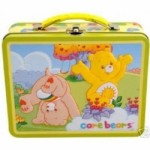This month I had a super cool opportunity to present at the National Council for Exceptional Children (CEC) Conference in Portland, Oregon. The title of my presentation was “Co-Teach-ish.” You may be wondering how they let me in with a title like that. Believe me, I have been wondering the same thing myself for the past six months since my proposal got accepted.
The concept is based on Peter Reynold’s book, “Ish.” In the story, Ramon is a little boy with a big imagination. He gets discouraged that his drawings aren’t good enough. But when his little sister helps him see her perspective—that his drawings are beautiful even though they are not perfect—he begins to see, think, and act “ishly.”
Thinking ishly is all about accepting approximations in ourselves and those around us. Perfectionism is so last year. Vulnerability is in! Ish means we are flexible. We’re willing to try and be totally ok if we’re not perfect.
When we apply this concept to our teaching practice, new worlds begin to open. If you tend to struggle with discouragement for any imperfection in your practice, here are a few suggestions to begin thinking ishly:
- Narrow your focus. This may seem counter-intuitive, but when we expect ourselves to be a master of every skill all at once, we can become overwhelmed. Just choose one area of your practice as a focus for improvement.
- Intentionally build micro skills. Any teaching strategy is made up of countless micro skills. Do some analytical work to break down the skill. Your teacher evaluation tool is a great place to start.
- Identify an approximation of the skill in practice. Now that you know which micro skill you want to work on, recognize when you’ve gotten closer to mastering it.
- Celebrate small successes. Yes, yes. This one is cliché I know. But intentionally taking time to enjoy feeling good about ourselves for the progress we make along the journey is absolutely essential to growing our efficacy.
Sure, lots of people can tout the mantra “celebrate small successes,” but it takes keen insight to identify subtle evidence of improvement. Accepting approximations is not about lowering standards or patting ourselves on the back for doing something right; it’s about intentional, methodical skill-building over time. This leads to greater efficacy. And when teachers have more efficacy, students are more engaged and student outcomes increase.
The thing is, teaching is hard. The stakes are high to do it well. After all, we’ve got kids who are counting on us. But thinking with an ish mindset helps us see that we don’t have to be perfect to be effective. We just have to teachish.










Comments 3
I struggle with the need to feel perfect sometimes, and when that happens I start to lose joy in my job. I love that you broke this down into easy steps that I can use and share with my other teachers!
I love this and I love Ish! I use it with my students when we set goals. This is excellent advice for teachers, Randi!
Thank you for sharing your article. I haven’t heard of this concept, but as a principal this is definitely something that I will do some further research on. It’s an interesting concept to teach students along with growth/fixed mindset. At times, we want to have a fixed mindset, and the work that we do needs to be at a higher standard. But sometimes we can ish with a growth mindset and allow ourselves the time it takes to produce the product we want. It doesn’t have to be perfect or happen over night.